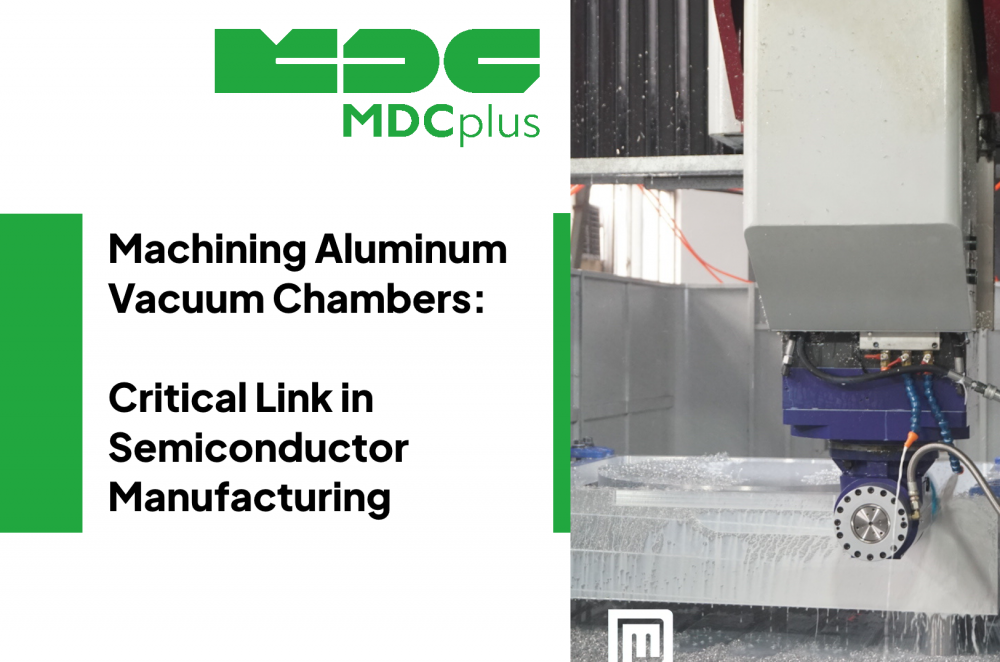Machining Precision Aluminum Vacuum Chambers - Critical Link in Semiconductor Manufacturing
In the world of semiconductor production, precision isn't optional - it's foundational. One of the most essential components in this highly controlled environment is the aluminum alloy vacuum chamber. Often invisible to end users, these chambers enable core processes like thin-film deposition, plasma etching, and ion implantation, all of which require an ultra-clean, ultra-stable, and tightly sealed environment.
What Are Aluminum Vacuum Chambers
Vacuum chambers serve as the heart of process modules in the semiconductor industry. They're not just containers - they form the active environment where sensitive microfabrication steps take place. These chambers must:
- Withstand extreme pressure differentials
- Resist chemical corrosion from reactive gases
- Maintain tight dimensional tolerances over repeated thermal cycles
- Comply with rigorous standards for leak-tightness and cleanliness
Aluminum alloys, especially 6061 and 5083, are widely used due to their balance of machinability, thermal stability, and corrosion resistance.
CNC Machining: The Enabler of Repeatable Precision
To meet the dimensional and sealing demands of vacuum chamber production, manufacturers rely heavily on CNC machining technologies. High-speed milling, deep-hole drilling, and precision boring ensure:
- Micron-level tolerances
- Repeatable part geometries
- Smooth surface finishes (critical for vacuum integrity)
- Precision flatness for sealing interfaces
The process typically begins with CAD/CAM modeling, followed by multi-step CNC operations on 3-, 4-, or 5-axis machines. These steps are tightly controlled to avoid thermal distortion and maintain structural consistency.
From Model to Chamber: The Full Production Chain
Manufacturing a vacuum chamber is not a single-step job. It involves:
- Material Selection - Choosing an aluminum alloy with the right balance of hardness, thermal expansion, and weldability.
- CAD/CAM Modeling - Building a digital twin of the chamber, simulating stress, deflection, and airflow.
- CNC Machining - Performing high-precision cuts, bore patterns, and complex internal features.
- Metrology & Inspection - Using CMMs (coordinate measuring machines) and non-destructive testing to verify tolerances and detect micro-defects.
- Leak Testing - Performing helium leak detection and vacuum certification to ensure UHV compatibility.
Each of these steps is linked by quality control processes that rely on automation, traceability, and deep integration with modern MES systems.
A Strategic Component for an Advanced Industry
The push for smaller nodes and higher chip densities in the semiconductor sector has made vacuum chamber performance more critical than ever. By integrating CNC machining into the heart of this process, manufacturers achieve:
- Faster prototyping and production cycles
- Lower defect rates and reduced rework
- Traceable, repeatable manufacturing paths across facilities
- Compatibility with “smart factory” production lines
As semiconductor fabs continue to demand more from their equipment, precision-machined aluminum chambers will remain a strategic point of control - and a key indicator of a supplier's capability.
Final Thought
CNC machining isn't just a tool for shaping metal - it's a core enabler of technology platforms like semiconductors, optics, and aerospace. The manufacturing of aluminum vacuum chambers illustrates this perfectly: blending materials science, digital modeling, and micrometer-level execution into a product that supports some of the world’s most advanced engineering.
In this space, tolerance isn't just a number - it's the difference between breakthrough and breakdown.
About MDCplus
Our key features are real-time machine monitoring for swift issue resolution, power consumption tracking to promote sustainability, computerized maintenance management to reduce downtime, and vibration diagnostics for predictive maintenance. MDCplus's solutions are tailored for diverse industries, including aerospace, automotive, precision machining, and heavy industry. By delivering actionable insights and fostering seamless integration, we empower manufacturers to boost Overall Equipment Effectiveness (OEE), reduce operational costs, and achieve sustainable growth along with future planning.
Ready to increase your OEE, get clearer vision of your shop floor, and predict sustainably?
